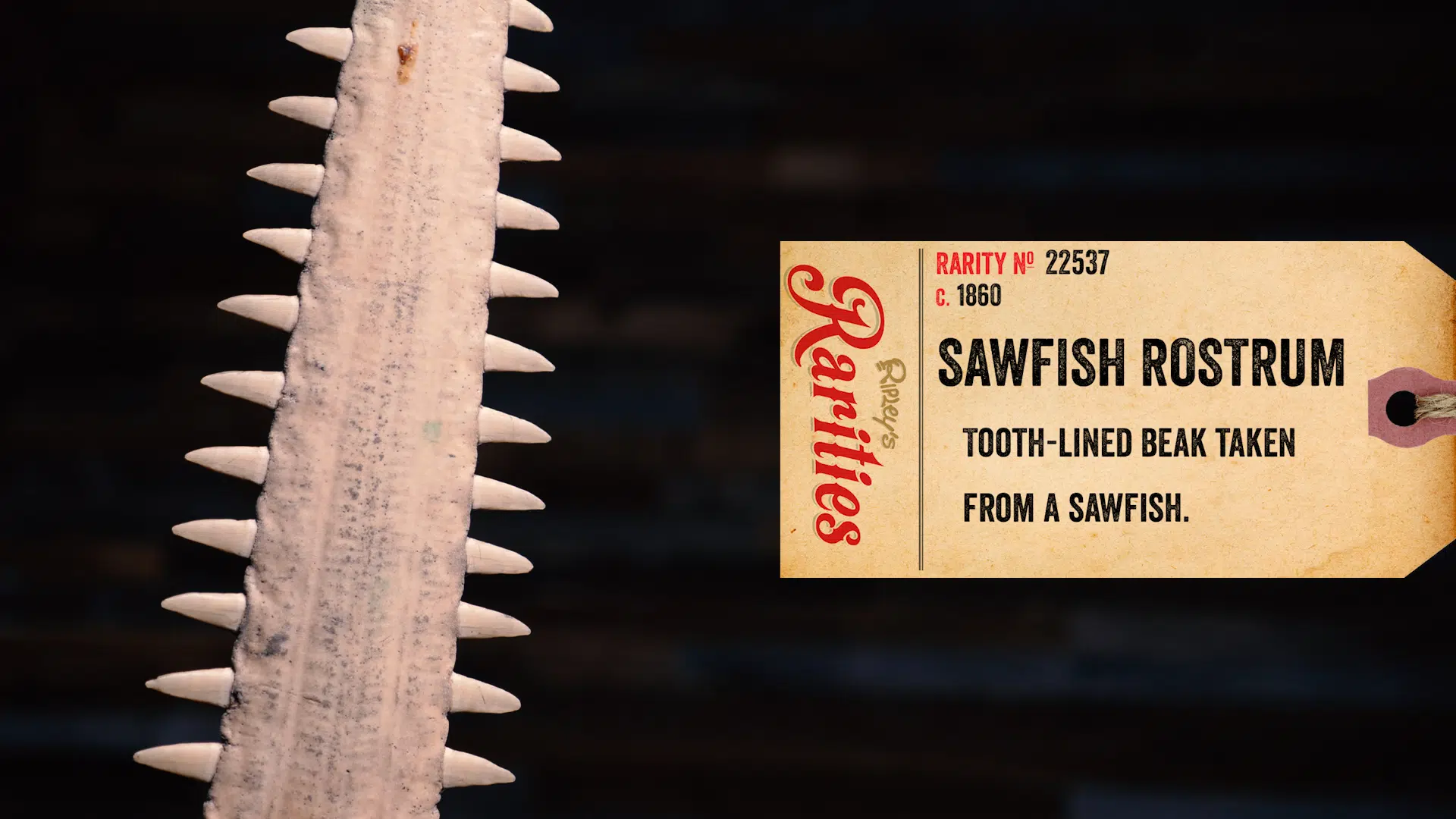
The Rare and Deadly Sawfish Rostrum
Featured in Ripley's Believe It or Not!

Sawfish
A strikingly curious sight, sawfish look exactly like the fish their name would suggest. Their elongated noses, known as rostrums, are lined with sharp teeth.

Featured in Ripley's Believe It or Not!

A strikingly curious sight, sawfish look exactly like the fish their name would suggest. Their elongated noses, known as rostrums, are lined with sharp teeth.
There are only five species of sawfish in the world—Dwarf, Knifetooth, Smalltooth, Largetooth and Green sawfish. The largest being the smalltooth sawfish, which can grow up to 25 feet!

The function of these bills was once unconfirmed. Zoologists long thought they used them to sort through murky waters, sussing through seafloor detritus to find prey. After a series of tests performed by researchers from the University of Queensland, they observed freshwater sawfish using the sensory organs along their rostrum to locate and dismember prey. The fish’s saw was so effective that it would sometimes cleave a fish completely in two. They now believe sawfish use their tooth-lined weapons to slash at schooling fish or even cut tissue off of whales.
This behavior is different from other fish with rostrums—like sturgeon and swordfish. These fish either use their bills to sense prey or to dismember it. The sawfish is special for doing both jobs with its nose.
Due to this unique morphology, combined with slow growth, all five species of sawfish are listed as endangered or critically endangered.
Revered throughout the world as a tool for shamans to ward off evil spirits, tribes in the Philippines, New Guinea, and New Zealand are known for carrying the tooth-lined rostrums into battle as vicious weapons.
By the 19th-century, world travelers and collectors began collecting sawfish rostrum in greater numbers. Eventually ending up in assorted wunderkammer or private collections, the beak was seen as an oddity of the ocean.
Though the Ripley’s collection houses a number of these fascinating objects, ones like the one we showcase here are antiques from the 1800s. The only new sawfish rostrums we have in our collection belong to the living sawfish at our world-famous Aquariums.
Source: The Rare and Deadly Sawfish Rostrum


